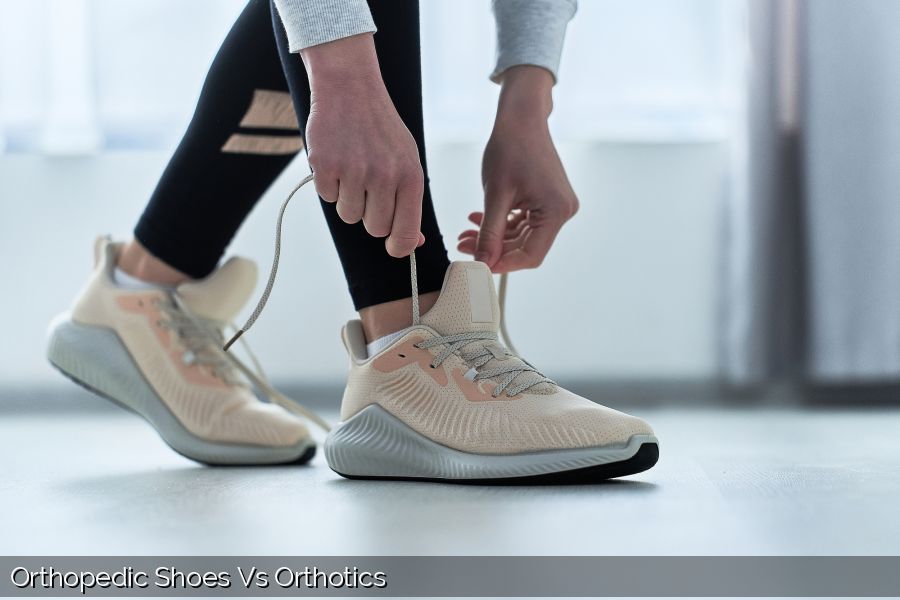Orthopedic Shoes Vs Orthotics
When it comes to footwear, orthopedic shoes and orthotics have some very real advantages. Custom orthotics can be inserted into any shoe, and therefore you don’t have to buy a new pair of shoes for them. They’re even more convenient if you are in a profession where you have to wear an orthotic. But unlike custom orthotics, you can’t choose what color or style you want – they’re stuck with the color you’ve chosen. The upside to this is that you get two for one.
Pros and cons of orthotics
Many patients choose orthotics for a variety of reasons. Custom orthotics are effective for reducing peak pressures and enhancing dynamic plantar loading. Prefabricated orthotics are less effective for reducing peak pressures. Both prefabricated and custom orthotics may have a negative impact on patient compliance and can be expensive. They also do not address the issue of resemblance between a custom and prefabricated orthotic.
The pros of custom orthotics are countless. They can provide relief from painful foot conditions and injuries, such as flat feet, bunions, and hammertoes. Orthotics can prevent pain caused by biomechanical misalignments, promote healing, and protect those with diabetic foot ulcers. However, the cons outweigh the benefits. Here is what you need to know about orthotics. Weighing over 100 pounds can increase the risk of foot ulcers and other conditions.
Pre-made orthotics may not be the best choice for everyone. The quality of orthotics depends on the design and prescription. Some insoles may not work for your specific foot size or are not designed to support your foot arch properly. These pre-made orthotics are sold in shoe stores, cruise ships, and the media. The quality and comfort of your custom-made orthotic depends on what your doctor prescribed and how well you use it.
Some pros of orthotics include improved balance, improved posture, and reduced pain. They can also reduce the risk of falls. But there are also some cons, too. Because of their biomechanical contributions, people may be more likely to reject orthotics if they don’t fully understand their benefits. But if your feet aren’t aching or flat, your podiatrist can determine whether you need orthotics.
Foot orthotics are typically bought by people who enjoy high-impact sports. They are intended to help absorb the shock of landing. Different sports require different types of orthotics. For example, orthotics for ski boots are different than those used in cycling or golf shoes. If you participate in a sport, it’s worth visiting a podiatrist to get a proper orthotic for your shoes. It’s better to be safe than sorry.
Gait problems
The debate over the pros and cons of orthotics versus orthopedic shoes is ongoing, but the basic benefits of both options remain the same. Custom orthotics can alleviate a number of common gait problems, from runner’s knee to pigeon toe. They can also help correct abnormal gait, which can lead to a number of serious problems. While orthotics are expensive, they can also be a good investment as the costs of future medical care can often be recovered.
In addition to providing arch support, orthopedic shoes can also improve the gait of those with flat or high-arched feet. These feet cause a variety of problems, including back pain. Overpronation, or rolling inward too much, can cause back pain, which can progress to other parts of the body. Supination, on the other hand, causes the foot to roll outward rather than down.
Over-the-counter and custom-made orthotic inserts are widely available. However, a doctor may recommend custom-made orthotic inserts based on your unique measurements. Generally, orthotics are best for people with mobility issues, as they stabilize the ankle and reduce the likelihood of back, knee, or joint pain. Similarly, orthotics are essential for diabetic treatment. You should talk to your doctor if you are not sure whether orthotics are right for you.
Cushioning
If you’re looking for additional cushioning in your shoes, you might be considering inserts. Orthopedic shoes have special insoles to provide extra support and cushioning in certain areas of the foot. While shoe inserts are inexpensive and available at many stores, they’re not custom-fit for your foot and may not be effective for chronic conditions. Orthopedic shoes, on the other hand, are made for your specific foot type and offer you a variety of benefits, including increased comfort and support.
There are advantages to both methods, and there are important differences between them. Orthotics provide support, while the former provides cushioning. Cushioning inserts are made of soft materials such as silicone, rubber, and polyethylene. Conversely, orthotics provide support and can be made of hard materials like urethane and PVC. For people who suffer from plantar fasciitis, foot orthoses are recommended.
Those with painful or chronic foot conditions can benefit from both orthopedic shoes and orthotics. Orthopedic shoes offer extra cushioning and a deep heel cup. They may also have extra room in the toe box, which can be useful for patients with foot pain. By providing support and comfort, these shoes can reduce pain and improve the quality of life. The pros and cons of orthotic shoes are explained below.
While over-the-counter cushioned inserts can mask foot pain, they often do little to correct underlying problems. Whether your feet are suffering from plantar fasciitis, arthritis, or a more severe condition, orthotics can help you achieve better alignment, reduce stress, and help the healing process. A common problem with the feet is over-pronation. Orthotics help correct this condition by realigning the foot and ankle bones.
Comfort
If you’re wondering about the difference between orthopedic shoes and orthotics, you’re not alone. Many people experience foot pain from improper footwear. Many people opt for orthopedic shoes, which are made to provide proper support for the feet. They also come in a wide variety of styles and are often available in non-standard sizes. Orthopedic shoes typically have a heel and footbed to prevent irritation and pressure points.
The first major difference between regular footwear and orthotic shoes is the support that orthopedic footwear offers. Orthopedic shoes have a supportive arch, which eliminates excessive pronation, which puts pressure on the ankles, knees, and lower back. This supports the foot properly and eliminates pain and discomfort. Besides that, orthopedic shoes are usually designed with an extra-deep toe box to accommodate orthotic inserts. A deep toe box helps distribute weight evenly under the foot, reducing pressure on the foot.
Orthopedic shoes have added cushioning and are designed to support the leg, ankle, and foot structure. The word orthotic is derived from the Greek word for “correct.” So, they are made with your feet and ankle in mind. They also have a removable insole, which is important for orthotics. They are ideal for long distance walking or other long walks. Whether you need to walk around town, on a trail, or in a gym, there is a shoe for you.
While many people feel that orthotics are the best option, there are still a few drawbacks to them. Orthopedic shoes often come with a heavy price tag. For many people, it’s simply not worth the extra money. After all, the benefits of orthotic shoes are worth the price. There is no need to settle for the less expensive alternative. If you’re not sure whether to opt for orthotics or not, consider getting a pair of orthopedic shoes.
If you’re not sure whether orthotics are the right solution for your problem, you can try a bend test to determine which type will fit you best. Some people are prone to arch pain and simply need more cushion. In some cases, a combination of these methods can alleviate pain and help the patient walk better. For instance, you can try wearing memory foam orthotics, but they’re short-lived and flimsy.

